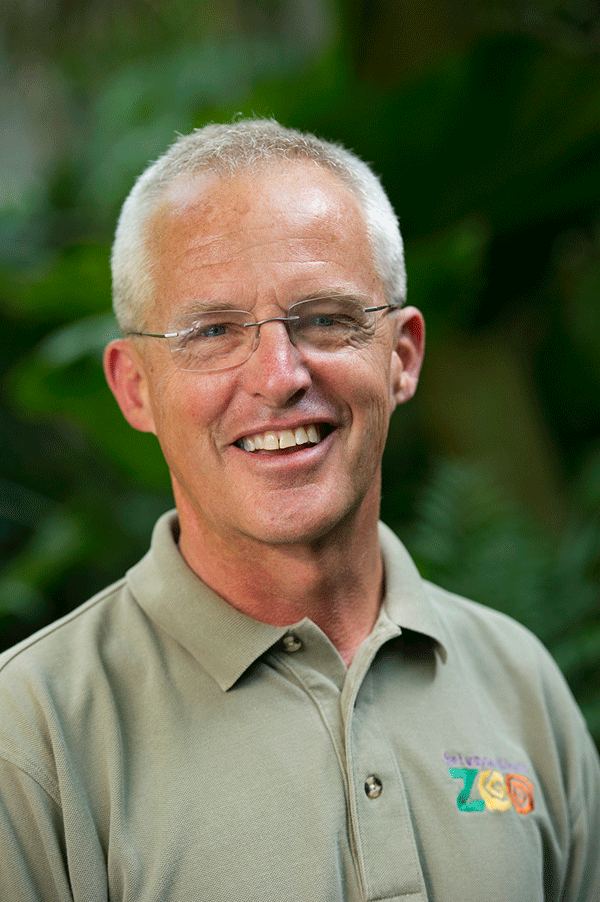When I was a young child and my family would come to Fort Wayne to visit relatives, our most anticipated event was visiting the Fort Wayne Children’s Zoo with our grandparents. Each summer we would go to the zoo and spend the day – animals, rides, lunch, souvenirs. It’s was the highlight of every visit, every summer, every year. Living here as an adult and raising three children of my own, that annual outing was a huge part of their lives, and my grandparents were always the ringleaders. When my sisters would visit with their children, we knew a trip to the zoo was mandatory. I now have a granddaughter, and we’re taking a somewhat different approach. Instead of the one-day, all-day blowout, we have a grandparent membership which allows us to take her for an hour here, an hour there, taking as much or as little time as she can handle on any given day. It’s a new way to experience the zoo, and as thousands of families in and around Fort Wayne know, there’s no bad way to experience our Children’s Zoo. It’s a landmark and a treasure, and it’s provided joy to generations.
One of the many who have a lifetime of memories of the zoo is its director, Jim Anderson, whose entire academic and career plan was altered by a summer job. A graduate of South Side High School, Anderson played trumpet in the band and decided to pursue a major in music at Indiana University.
In 1976, home for a few months after his freshman year, he applied for a summer job at the zoo. That was all she wrote. Within a few years Anderson was graduating with a degree in animal science from Purdue University instead of the music degree from IU. He’s been working for the zoo ever since, for the last two decades as its director.
As the zoo celebrates its 50th anniversary this year, Anderson is only the second director in its history. Founding director Earl Wells preceded him and laid the groundwork for Anderson’s own vision of the zoo.
“We have 250 employees this summer, and we give them each a piece of responsibility,” he says. “That also gives them a piece of the success of the zoo. I’m here, but I’m not going to be driving the train today or flipping burgers or feeding the giraffes or selling tickets. All of those things are an important part of what makes this zoo successful, and we can all take credit for making that happen.”
Giving each person at the zoo a stake in its success – and understanding their importance to the zoo’s mission – has made it a happy place to work and to visit for half a century.
“You have to understand that no one person is more important than the newest employee,” says Anderson. “Each person is part of something big. We tell them ‘We can’t do it without you.’”
That sense of team spreads beyond the zoo’s borders and into the city and region as a whole, with Anderson understanding that there’s a great relationship between the zoo and the community which has so embraced it.
“Part of what we’re trying to do with this 50th birthday celebration is to get our message out to more people, to share our zoo with the community and to thank the community for all its done for us. We don’t get money from the city to keep this all going. We’ve been built by donations, admission and memberships, and we use that money to pay our staff and feed the animals. We serve the community, but the community has served us. It’s been a very circular thing.”
Although open for guests April through October, the zoo is maintained all year long and hosts school field trips which help youngsters learn about zoology and animals in a fun and interactive way. Anderson says that even if you drive by the zoo on Christmas day, you’ll see 30 cars in the parking lot, since staff are always checking on the animals and the facilities. A walk around the zoo quickly demonstrates the sense of teamwork Anderson touts, with everyone working diligently to serve the thousands of visitors that come through the gates each year. (That numbers 20 million visitors in 50 years.) Anderson feels strongly that the zoo’s greatest goal is in the experience they give their guests.
“Our founding director Earl Wells said ‘People don’t want to see things, they want to do things,’ and we try to provide an interactive experience. I want to provide an enriching experience for families that come here. It really is a higher purpose. It’s a pretty big thing.”
Two directors in 50 years is a fairly remarkable accomplishment for any organization and demonstrates the stability which has made the zoo successful. Always moving forward with new attractions, the updated reef aquarium recently reopened and the stingray exhibit is set to open mid-summer. There are more plans to expand and grow the Australian Adventure with a new aviary and reptile house along with improvements to the boat ride. There are always possible projects in the offing.
“We have two lists: the ‘want to do’ and the ‘have to do,’” says Anderson. “It’s always a matter of time and money what gets done. For example, the Mother Goose which has been sitting there for 50 years is on the ‘have to do’ list. It’s a great need of a cleaning and update. I want everything to be perfect, and it’s just a matter of making sure we have the money to do all of it.”
The father of five children, ranging in age from 14 to 23, Anderson has turned that summer job 39 years ago into a lifelong career and passion. He says there are some zoo directors who hopscotch around the country moving from zoo to zoo. That isn’t his career path.
“I’ve seen about 150 zoos all around the country, and I think the experience we offer our guests is as good as it gets. In the almost 40 years I’ve worked here, I’ve had other opportunities. But it’s a hometown thing, it’s a family thing, and I’ve always felt this community and this team here is headed in the right direction. It’s fun to be part of it.”


